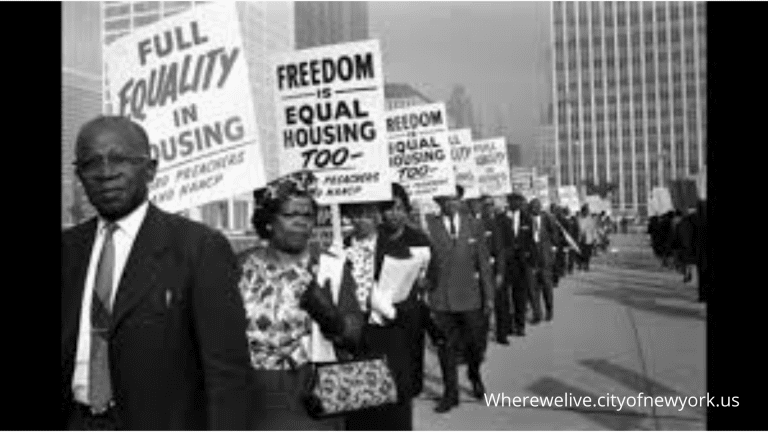
To deny the presence of systemic racism in America one must turn a blind eye to our history.
Fifty meters Ahead
What if a 100-meter dash was to take place next week? And what if over the past five years all the participants had the same privileges in training for the event: They had equal access to training facilities, equipment, nutrition, etc? Everything was equal.
Now, what if moments before the event began some of the participants were given a “head-start”? That’s right: what if some were allowed to begin fifty meters ahead of everyone else? It would not be a fair race.
What if, upon completion of the event, the winner was ecstatic anyways? When asked about the “victory,” they replied that they wanted to give all the glory to God and to their mom.
And what if someone dared suggest to them that the race was not fair? After all, “you had a head start.”
And what if, the winner denied the allegations—even though everyone knows they started fifty meters ahead?
What if, sometime later, the victor admitted that they had a head-start, but then asserted that, “I earned it.”
But what if they didn’t “earn it”? What if they were given the head-start simply because they had more power than the other participants: they simply demanded the right to start fifty meters ahead of everyone else and no one was able to stop them?
This, I suggest, is the framework for the debate regarding systemic racism in our country today. Many Whites are claiming that for the past “x” years everything is equal (though even that is not true). What is too often overlooked is that people of color are not even starting the race from the same position.
Systemic Racism?
One cannot argue that systemic racism doesn’t exist today because everyone has the same rights to education, employment, and wealth accumulation. “Ready, set, go!” “Oh, btw, I’m sorry you are starting so far behind me. You really should work harder to get out of your situation.”
Systemic racism created the systems of injustice and inequity so that, even if all things were equal today, persons of color are not able to start from the same position.
The systems that have been in place since before the founding of our country have so favored Whites and so oppressed Blacks that Whites are not merely beginning the race fifty meters ahead, most Blacks are not even allowed to compete.
I noted in an earlier post that ending chattel slavery did not end the racism that brought about and sustained the system of oppression. The fact is that Whites profited from slavery. Once slavery was abolished, they had to find other ways of maintaining their economic, social, and political superiority. And they did.
[NB: Though I will not discuss many of the ways Whites maintained the oppression of Blacks in this post, I strongly encourage you to consult the work of Douglas Blackmon, Slavery by Another Name: The Re-Enslavement of Black Americans from the Civil War to World War II.]How racism led to the ghettos
In the last few posts, I noted that the educational system in the US is such that most children of color do not have the same opportunities for quality education as most Whites simply because they live in poorer neighborhoods where the schools are often terribly deficient.
In this post, I would like to note some of the leading reasons why most Blacks live in urban areas with suppressed property values and, consequently, lower-quality schools. Mind you: the answers are quite disturbing!
One of the means by which powerful Whites kept the average person of color from gaining access to wealth was through local, state, and federal laws that denied Blacks the ability to purchase housing in growing suburban communities.
[NB: For a detailed discussion of this topic, I highly recommend Richard Rothstein’s, The Color of Law: A Forgotten History of How Our Government Segregated America, which provides significant details as to how government policies segregated every major city in the US and the disastrous effects of these policies for persons of color]For instance, when Blacks attempted to rent housing in White communities, they were barred by laws, rules, or regulations that excluded them from doing so.
And the ability to own a home in these neighborhoods was nearly impossible for a variety of reasons. In 1933, the federal government created the Home Owners’ Loan Corporation (HOLC) to help rescue families that were in danger of losing their homes because of the Depression. Rothstein chronicles what happened next,
“HOLC mortgages had low interest rates, but the borrowers still were obligated to make regular payments. The HOLC, therefore, had to exercise prudence about its borrowers’ abilities to avoid default. To assess risk, the HOLC wanted to know something about the condition of the house and of surrounding houses in the neighborhood to see whether the property would likely maintain its value. The HOLC hired local real estate agents to make the appraisals on which refinancing decisions could be based. With these agents required by their national ethics code to maintain segregation, it’s not surprising that in gauging risk HOLC considered the racial composition of neighborhoods. The HOLC created color-coded maps of every metropolitan area in the nation, with the safest neighborhoods colored green and the riskiest colored red. A neighborhood earned a red color if African Americans lived in it, even if it was a solid middle-class neighborhood of single-family homes.”[1]
Even when Blacks were permitted to purchase a home in a more affluent community, they were often unable to secure a loan.
The Federal Housing Authority (FHA), established in 1934, refused to insure home loans for any bank if there were any persons of color in the community because it was deemed too great a risk. This meant that White persons were no longer able to move into a community if there were already Black residents living there. It also meant that Black persons couldn’t purchase one of the homes that the Whites were fleeing because they could not secure a loan. The result is that the home values in Black communities became depressed.
Many local city councils worked diligently to ensure racial segregation in the housing markets, which lead to the depression of home values in Black communities. Rothstein notes, “Exclusionary zoning ordinances could be, and have been, successful in keeping low-income African Americans, indeed all low-income families, out of middle-class neighborhoods.”[2]
By the middle of the twentieth century, the Federal courts had issued numerous rulings against these racially motivated practices. Federal laws forbidding racial discrimination in the housing market soon followed.
It was then that some Whites took matters into their own hands. Builders imposed restrictions on selling newly constructed homes to Blacks. Homeowner’s associations imposed restrictions that forbade Blacks from being part of the associations—thus, making them unable to obtain loans that required the association’s approval before being secured.
At other times, Whites took to violence to ensure that Blacks did not move into their communities. Isabel Wilkerson, in her book, The Warmth of Other Sons: The Epic Story of America’s Great Migration, details the events of the Chicago riots in 1951 that resulted when Harvey Clark Jr., a Black WWII veteran, and his family moved into an all-White apartment complex closer to his work.
After the Clark family spent the day moving their possessions into their new apartment, a mob, forced them out. The mob, which grew to 4,000, then,
stormed the apartment and hurled the family’s belongings out of a third floor window: the sofa, the chairs, the clothes, the baby pictures. The mob tore out the fixtures: the stove, the radiators, the sinks. They smashed the piano the couple had saved up for their young daughter to play, overturned the refrigerator, bashed in the toilet. They set the family’s belongings on fire and then firebombed the building, leaving even the white tenants homeless. The rioters overturned police cars and threw stones at firefighters who tried to put out the fire.[3]
If space would permit, we could include hundreds and, perhaps, thousands of more stories.[4]
But those laws and practices are a thing of the past!
Of course, it is true that some Black families today are moving into more affluent neighborhoods. See, everything is fine. Racial prejudice is a part of the past!
The problem, of course, even if we assume that this was true, is that most persons of color today lack the resources needed to move into more affluent communities in order to acquire such wealth.
Housing prices in many parts of the US continue to skyrocket. In the past 6 months, my wife and I tried to purchase a home in the Phoenix area only to be constantly outbid by all-cash offers that we regularly $70,000 over the asking price. Houses in other parts of the country were selling for more than $200,000 over the asking price.
NB: As I am finishing this post my wife just stepped into my office space to inform me that our offer yesterday was rejected in favor of an all-cash offer above the asking price.
Sure, this is not indicative of all the housing markets in the US. The fact remains that one of the best ways to for a middle-class family to acquire wealth is to purchase a suburban home and to reap the benefits of rising home values. This is a race that lower-class persons are simply excluded from running.
NB: new data from the Pew Research group has shown that the rich are getting richer at a faster rate than ever and the middle-class and lower-class are declining.[5]
Thus, even if many of the lower-class wanted to join the race, it is probably too late.
So much for having a fifty-meter head start.
If you have been blessed by this blog post and would like to see others benefit too, would you please consider giving a tax-deductible contribution to support determinetruth ministries and make possible future posts like this? You may give a tax-deductible gift by following this link
Good news: If you wish to view this blog on your smartphone through the Determinetruth app simply download the “tithe.ly church” app on your smartphone and insert “determinetruth” as the church name you wish to follow. Once it is loaded, simply click on the “blog” icon and they will automatically load.
If you would like to have Rob speak at your church or organization in person or via zoom, please let us know by filling out the contact info on the Contact me tab on this site.
If you would like to share your story, or if you have questions that you would like addressed in future posts, you may submit them in the Contact me tab on this site.
[1] Rothstein, Richard. The Color of Law: A Forgotten History of How Our Government Segregated America, 64.
[2] Color of Law, 59.
[3] Isabel Wilkerson, in her book, The Warmth of Other Sons: The Epic Story of America’s Great Migration. Cited by https://www.zinnedproject.org/news/tdih/cicero-riot.
[4] See the resources mentioned throughout: Rothstein, Wilkerson, and Blackmon.
[5] https://www.pewresearch.org/social-trends/2020/01/09/trends-in-income-and-wealth-inequality/ last accessed 9-27-21.












